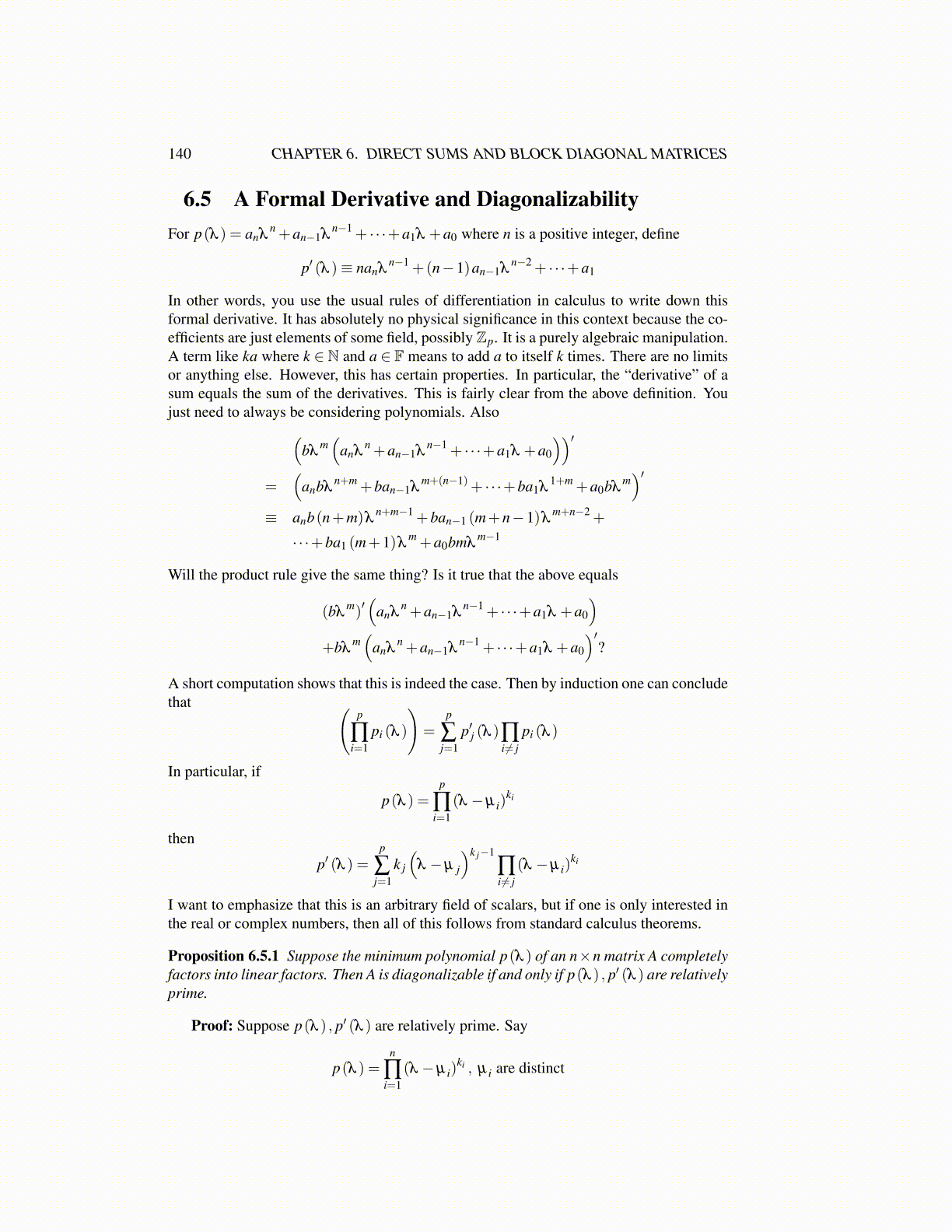
140 CHAPTER 6. DIRECT SUMS AND BLOCK DIAGONAL MATRICES
6.5 A Formal Derivative and DiagonalizabilityFor p(λ ) = anλ
n +an−1λn−1 + · · ·+a1λ +a0 where n is a positive integer, define
p′ (λ )≡ nanλn−1 +(n−1)an−1λ
n−2 + · · ·+a1
In other words, you use the usual rules of differentiation in calculus to write down thisformal derivative. It has absolutely no physical significance in this context because the co-efficients are just elements of some field, possibly Zp. It is a purely algebraic manipulation.A term like ka where k ∈ N and a ∈ F means to add a to itself k times. There are no limitsor anything else. However, this has certain properties. In particular, the “derivative” of asum equals the sum of the derivatives. This is fairly clear from the above definition. Youjust need to always be considering polynomials. Also(
bλm(
anλn +an−1λ
n−1 + · · ·+a1λ +a0
))′=
(anbλ
n+m +ban−1λm+(n−1)+ · · ·+ba1λ
1+m +a0bλm)′
≡ anb(n+m)λn+m−1 +ban−1 (m+n−1)λ
m+n−2 +
· · ·+ba1 (m+1)λm +a0bmλ
m−1
Will the product rule give the same thing? Is it true that the above equals
(bλm)′(
anλn +an−1λ
n−1 + · · ·+a1λ +a0
)+bλ
m(
anλn +an−1λ
n−1 + · · ·+a1λ +a0
)′?
A short computation shows that this is indeed the case. Then by induction one can concludethat (
p
∏i=1
pi (λ )
)=
p
∑j=1
p′j (λ )∏i̸= j
pi (λ )
In particular, if
p(λ ) =p
∏i=1
(λ −µ i)ki
then
p′ (λ ) =p
∑j=1
k j
(λ −µ j
)k j−1∏i̸= j
(λ −µ i)ki
I want to emphasize that this is an arbitrary field of scalars, but if one is only interested inthe real or complex numbers, then all of this follows from standard calculus theorems.
Proposition 6.5.1 Suppose the minimum polynomial p(λ ) of an n×n matrix A completelyfactors into linear factors. Then A is diagonalizable if and only if p(λ ) , p′ (λ ) are relativelyprime.
Proof: Suppose p(λ ) , p′ (λ ) are relatively prime. Say
p(λ ) =n
∏i=1
(λ −µ i)ki , µ i are distinct